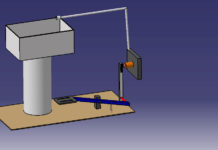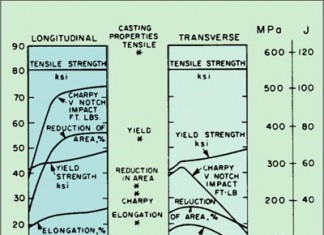SENSIBLE HEAT, LATENT HEAT and SPECIFIC HEAT
SENSIBLE HEAT
Heat level or heat intensity can readily be measured when it changes the temperature of a substance (remember the example of changing 1 lb of water from 68°F to 69°F). This change in the heat level can be measured with a thermometer. When a change of temperature can be registered, we know that the level of heat or heat intensity has changed; this is called sensible heat.
LATENT HEAT
Another type of heat is called latent or hidden heat. Heat is added in this process, but no temperature rise occurs. An example is heat added to water while it is boiling in an open container. Once water is brought to the boiling point, adding more heat only makes it boil faster; it does not raise the temperature, Figure 1.

There are three other terms that are important to understand when referring to latent heat transfers: latent heat of vaporization, latent heat of condensation, and latent heat of fusion. Latent heat of vaporization is the amount of heat energy, in Btu/lb, required to change a substance into a vapor. For example, the latent heat of vaporization for water at atmospheric conditions is 970.3 Btu/lb. For ease of calculation, we often round this value to 970 Btu/lb. This means that if we have 1 lb of water at 212°F that we want to change to 1 lb of steam at 212°F, we would need to add 970 Btu of heat energy to the water.
Latent heat of condensation is the amount of heat energy, in Btu/lb, required to change a vapor into a liquid. This is, in effect, the opposite of latent heat of vaporization. For example, the latent heat of condensation for steam at atmospheric conditions is 970.3 Btu/lb. If we had 1 lb of steam at 212°F that we wanted to change to 1 lb of water at 212°F, we would need to remove 970 Btu of heat energy from the steam.
Latent heat of fusion is the amount of heat energy needed to change the state of a substance from a solid to a liquid or from a liquid to a solid. The latent heat of fusion for water is 144 Btu/lb. If we had 1 lb of ice at 32°F under atmospheric conditions, we would have to add 144 Btu of heat energy to the ice in order to melt it. If, on the other hand, we had 1 lb of water at 32°F under atmospheric conditions, we would have to remove 144 Btu of heat energy from the water in order to freeze it.
The following example describes the sensible heat and latent heat characteristics of 1 lb of water at standard atmospheric pressure from 0°F through the temperature range to above the boiling point. In the chart in Figure 2 notice that temperature is plotted on the left margin, and heat content is plotted along the bottom of the chart. The heat content scale on the bottom of the diagram indicates the amount of heat added during the processes being described, not the actual heat content of the substance. We can see that as heat is added, the temperature will rise except during the latent- or hidden-heat processes.

The following statements should help you to understand the chart:
- Water is in the form of ice at point 1 where the example starts. Point 1 is not absolute zero. It is 0°F and is used as a starting point. Since no heat has been added to the ice at point 1, we can see that the heat content scale at that point is zero.
- Heat added from point 1 to point 2 is sensible heat. This is a registered rise in temperature. Since it took 16 Btu of heat energy to raise the temperature of the ice from 0°F to 32°F, we can conclude that it takes only 0.5 Btu of heat energy to raise the temperature of 1 lb of ice 1°F.
- When point 2 is reached, the ice is at its highest temperature of 32°F. This means that if more heat is added, it will be latent heat and will start to melt the ice but not raise its temperature. Adding 144 Btu of heat will change the 1 lb of ice to 1 lb of water. Removing any heat will cool the ice below 32°F.
- When point 3 is reached, the substance is now 100% water. Adding more heat causes a rise in temperature. (This is sensible heat.) Removal of any heat at point 3 results in some of the water changing back to ice. This is described as removing latent heat because there is no change in temperature.
- Heat added from point 3 to point 4 is sensible heat; when point 4 is reached, 180 Btu of heat will have been added from point 3. The water has been heated from 32°F to 212°F, which is a 180°F rise. Referring back to the definition of the Btu, you will see that it takes 1 Btu of heat energy to raise the temperature of 1 lb of water 1°F. So, a 180°F temperature rise will require 180 Btu of heat energy.
- Point 4 represents the 100% saturated liquid point. The water is saturated with heat to the point that the addition of any more heat will cause the water to boil and start changing to a vapor (steam). If any heat is removed from the water at this point, it will simply cool to a temperature that is lower than 212°F. Adding 970 Btu makes the 1 lb of liquid boil to point 5 and become a vapor.
- Point 5 represents the 100% saturated vapor point. The water is now in the vapor state. Heat removed would be latent heat and would change some of the vapor back to a liquid. This is called condensing the vapor. Any heat added at point 5 is sensible heat; it raises the vapor temperature above the boiling point, which is called super heating.
Any water vapor with a temperature above the boiling point of 212°F is super heated vapor. The concept of Super heat will be important in future studies. Note that in the vapor state it takes only 0.5 Btu to heat the water vapor (steam) 1°F, the same as when water was in the ice (solid) state.
SPECIFIC HEAT
We now realize that different substances respond differently to heat. When 1 Btu of heat energy is added to 1 lb of water, it changes the temperature 1°F. This holds true only for water; other heated substances have different values. For instance, we noted that adding 0.5 Btu of heat energy to either ice or steam (water vapor) caused a 1°F rise per pound while in these states. Ice and steam heated, or increased their temperatures, at twice the rate of water. Adding 1 Btu would cause a 2°F rise. This difference in heat rise is known as specific heat.

Specific heat is the amount of heat necessary to raise the temperature of 1 lb of a substance 1°F. Every substance has a different specific heat. Note that the specific heat of water is 1 Btu/lb/°F. See Figure 3 for the specific heat of some other substances.
Copied from REFRIGERATION & AIR CONDITIONING TECHNOLOGY by WILLIAM C. WHITMAN, WILLIAM M. JOHNSON, JOHN A. TOMCZYK and EUGENE SILBERSTEIN













